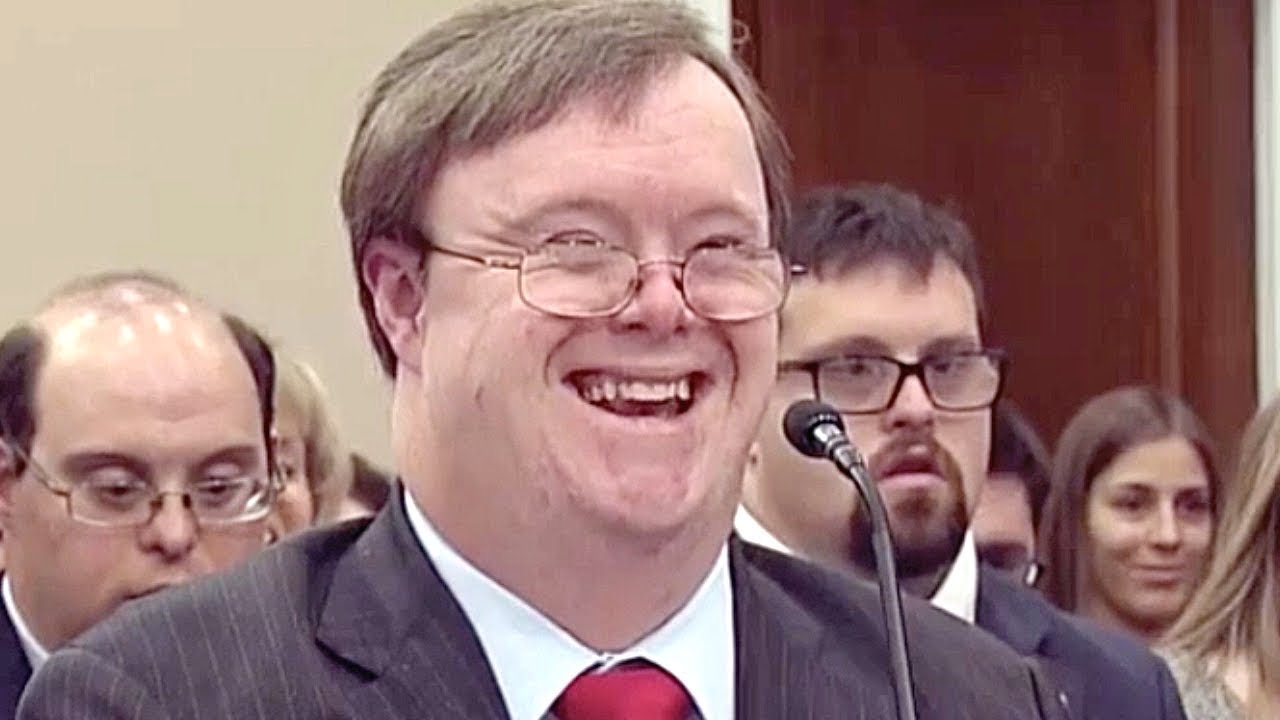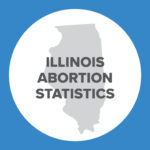Ohio Vigorously Defends Down Syndrome Antidiscrimination Law

Ohio HB 214 prohibits abortion where the abortionist knows that the mother is seeking the abortion, in whole or in part, because the baby was diagnosed with Down Syndrome, because a test result indicated Down Syndrome in the baby, or because of any other reason to believe the baby has Down Syndrome.
HB 214 was signed into law on December 22, 2017 and was scheduled to go into effect March 23, 2018. On February 15, 2018, the ACLU, on behalf of several abortion providers, filed a lawsuit attacking the new law. On March 2, 2018 the State of Ohio submitted a brief opposing the ACLU’s motion for a temporary restraining order and preliminary injunction. On March 14, 2018 the U.S. District Court granted the motion for a preliminary injunction.
This article includes three parts.
- The first part explains how the Ohio Down Syndrome law presents a major challenge to the Roe v. Wade and Planned Parenthood v. Casey abortion precedents of the U.S. Supreme Court.
- The second part sets out three paths the U.S. Supreme Court could take in upholding a Down Syndrome antidiscrimination abortion law.
- The third part briefly reviews the outstanding brief recently filed by the State of Ohio in support of its new Down Syndrome antidiscrimination abortion law.
Ohio Down Syndrome Law Challenges Roe and Casey
The Ohio law banning Down Syndrome discrimination abortion sets up a major challenge to key abortion precedents of the U.S. Supreme Court.
- The federal abortion right was first declared by the Supreme Court in the 1973 case of Roe v. Wade and then affirmed by the Court in the 1992 case of Planned Parenthood v. Casey.
- The “most central principle” of Roe, according to a plurality of the Court in Casey, is what is sometimes called the viability rule.
- Under the viability rule, government “may not prohibit any woman from making the ultimate decision to terminate her pregnancy before viability.”
- The plurality in Casey wrote clearly and emphatically: “The woman’s right to terminate her pregnancy before viability is the most central principle of Roe v. Wade. It is a rule of law and a component of liberty we cannot renounce.”
- Because the Ohio ban on Down Syndrome discrimination abortion applies to all pregnancies whether before or after viability, the law represents a direct challenge to the “most central principle” of Roe as reaffirmed in Casey.
Legal Arguments Supporting Down Syndrome Antidiscrimination Laws
If confronted with a Down Syndrome nondiscrimination abortion law, the Supreme Court could take at least three paths in upholding the law. Two of these paths might even be available to lower courts bound to follow existing Supreme Court precedent.
Option 1: The Court Could Rule that Existing Abortion Precedents, as they Stand, Do Not Protect Discrimination Abortion but only a General Right Not to Be Pregnant
In an earlier case involving a 20-week abortion law, three Down Syndrome organizations filed a brief advancing “novel arguments” said to have “originated with Nikolas T. Nikas at the Bioethics Defense Fund.”
As argued in that brief, the Supreme Court “has never framed the protected abortion decision as whether to bear or abort a particular child based on identified traits of genetic variation, disability, or other health condition. Instead,” the argument goes, “Casey formulated the abortion decision as one confronting a woman ‘when the woman confronts the reality that, despite her attempts to avoid it, she has become pregnant’– not when she accepts a pregnancy at first, but then comes to perceive the child she is carrying as defective” (internal citation to Casey omitted).
The recent brief filed by Ohio advances this same argument. An extended excerpt follows.
Roe concerned the decision whether or not to bear a child—“[t]he decision whether or not to beget or bear a child is at the very heart of this cluster of constitutionally protected choices.” Carey v. Population Servs., Int’l., 431 U.S. 678, 685 (1977). Indeed, a Roe concern, as Casey observed, was a choice potentially arising from “unplanned activity” or “in the event that contraception should fail.” 505 U.S. at 856. The “dimension of personal liberty that Roe sought to protect” was the decision to have an abortion “when the woman confronts the reality that, perhaps despite her attempts to avoid it, she has become pregnant.” Id. at 853.
Never has the Supreme Court—not in Roe, in Casey, or in any other decision—endorsed abortion based on a diagnosis of a physical or mental challenge. The Court has never framed the due process abortion decision as whether to bear or abort a child based on his or her genetic abnormality. The single claim Plaintiffs raise—substantive due process—has never included a right to abort an unborn child based on a disability.
The Ohio law does not interfere with the abortion right in Roe and Casey. It does not affect a decision whether to have “a” child. Instead, the statute restricts a doctor’s performance of an abortion based on a diagnosis of Down syndrome. Such an action is quite distinct from the circumstances and rule of Roe and Casey. The decision to have an abortion after a diagnosis of Down syndrome is fundamentally different from the generalized decision “whether or not to beget or bear a child.” Carey, 431 U.S. at 687.
And if it became legally permissible, indeed constitutionally protected, for abortions to be based on the diagnosis of a potential disability, then there is conceivably no end to selective abortions. If protecting Down syndrome from unequal treatment is not permitted, then—with rapidly advancing genetic understanding and testing—it is only a matter of time before selective abortions target other disabilities, or sex, or intellect, or attractiveness, or athletic ability, or any number of traits. . . .
Plaintiffs’ argument that “[a] ban on abortion at any point prior to viability, whether partial or total, is . . . per se unconstitutional” (Motion p. 12) misapprehends Roe and Casey. These decisions did not, at any time in a pregnancy, create “an absolute constitutional right to an abortion on . . . demand.” See, e.g., Doe v. Bolton, 410 U.S. 179, 189 (1973). Nor did the facts of Roe and Casey involve terminating a pregnancy based on a diagnosis of a disability. Casey addressed informed consent and notification statutes. 505 U.S. at 844. And Roe involved a law prohibiting most abortions. 410 U.S. at 118.
Other decisions, moreover, do indeed limit certain abortions prior to viability. . . . [I]n Gonzales v. Carhart, 550 U.S. 124, 147 (2007), the Court upheld the federal Partial-Birth Abortion Ban Act of 2003 (18 U.S.C. §1531), which prohibited a partial-birth abortion “both previability and postviability.”
Plaintiffs’ “per se unconstitutional” position also is wrong because it ascribes to the Supreme Court the unreasonable position that pre-viability abortion is of greater constitutional significance than core rights like the freedom of speech or assembly. “[E]ven the fundamental rights of the Bill of Rights,” the Supreme Court has said, “are not absolute.” Kovacs v. Cooper, 336 U.S. 77, 85 (1949).
In this argument, the Supreme Court could uphold a ban on Down Syndrome discrimination abortion without reversing its existing abortion precedents. It could treat such a ban as a question of first impression. No reversal of precedent would be required.
For the same reason, a lower court bound by Supreme Court precedent might also be able to deploy this argument, perhaps through an exercise in what has been described as “narrowing from below.” (The same source explains that “the precedential universe is now too complex to rely only on the familiar concepts of following and overruling, or to limit one’s view to conventional precedent. Narrowing from below and Supreme Court signals have become an important part of the story.”) However, such a question would present nuanced issues of vertical stare decisis that require further analysis before reaching a firm conclusion.
Option 2: The Court Could Rule that the Viability Rule Does Not Apply to the State Interest in Protecting Against Discrimination (aka the “Beck Argument”)
If confronted with a ban on Down Syndrome discrimination abortion, the Court could preserve Roe and Casey as applied to abortion restrictions generally, but rule that those precedents do not apply to laws designed to advance the government’s interest in eliminating unjust discrimination against unborn children with Down Syndrome.
University of Georgia Law Professor Randy Beck has made a similar argument for how the Court could constrain its precedents in such a way as to preserve them while also upholding pain-capable abortion bans that block at least some pre-viability abortions by banning abortion at 20 weeks of pregnancy.
Beck’s argument comes in two parts (the following Beck quotes can be found in my paper extensively discussing his argument).
- First, Beck recalls that Roe “took the position that the point at which a particular state interest would justify substantial restrictions on abortion depended on the particular state interest in question.”
- Second, Beck recalls that the 2007 Gonzales v. Carhart ruling “permits states to advance previously unrecognized interests in support of abortion regulations.”
- Combining these two legal principles, Beck concludes that “there is no reason all of those [state] interests should be subject to the same durational line.”
- Beck argues that “[t]he Court could appropriately confine the viability rule to the state interest the Court designed the rule to cover, a purely moral assessment of the value of unborn human life, and recognize different durational limits for the new state interests now permitted under Gonzales.”
One can easily see how a similar argument would work in the context of a Down Syndrome antidiscrimination abortion law.
- Down Syndrome abortion bans are designed to advance the acknowledged governmental interest in eradicating disability discrimination.
- The acknowledged governmental interest in eradicating disability discrimination is distinct from the state interests at stake in Roe and Casey, the cases where the Supreme Court invented and then affirmed the viability rule.
In this argument, as with the first argument set out above, the Supreme Court could uphold a ban on Down Syndrome discrimination abortion without reversing its existing abortion precedents. It could treat such a ban as a question of first impression to the extent that the Court has never confronted the question whether the viability rule attaches to abortion laws advancing the acknowledged governmental interest in eradicating disability discrimination. In that scenario, no reversal of precedent would be required.
For the same reason, as with the first argument set out above, a lower court bound by Supreme Court precedent might also be able to deploy this argument, perhaps through an exercise in what has been described as “narrowing from below.” (As set out above, the same source explains that “the precedential universe is now too complex to rely only on the familiar concepts of following and overruling, or to limit one’s view to conventional precedent. Narrowing from below and Supreme Court signals have become an important part of the story.”) However, as with the first argument set out above, such a question would present nuanced issues of vertical stare decisis that require further analysis before reaching a firm conclusion.
Option 3: The Court Could Make Major Adjustments to its Abortion Doctrines, Including Abandoning the General Prohibition on Pre-viability Abortion Bans.
If confronted with a ban on Down Syndrome discrimination abortion, the Court could also throw out the viability rule altogether, recognizing that, as I have argued, the viability rule “is unworkable, arbitrary, unjust, poorly reasoned, inadequate, and extreme” and “cannot be justified.” The Supreme Court is free to reverse its own precedents. After all, constitutional rulings from the Supreme Court are distinct from the Constitution itself. However, especially on an issue such as abortion, the Court might prefer to make incremental shifts in doctrine. If so, that would mean something more like preserving viability as the general rule but constraining the rule to allow for Down Syndrome protection throughout pregnancy.
Ohio Offers a Robust Defense of Its New Law Prohibiting Down Syndrome Discrimination Abortion
On March 2, 2018 the Ohio Attorney General filed a brief opposing the ACLU’s motion for a temporary restraining order and preliminary injunction. The Ohio brief offers a robust, thorough defense of the law.
The brief opens with a quote from Frank Stephens, a man with Down Syndrome who provided electrifying testimony to the U.S. Congress in October 2017. The brief provides background on Down Syndrome. In that background the brief cites a report that surveyed 284 people with Down Syndrome. In the words of the brief, of those 284 people, “99% felt happy with their lives, 97% liked who they were, and 86% said they could make friends easily.”
The brief goes on to discuss the history in America of legally sanctioned discrimination against people with disabilities in the early 20th century. The brief recounts policy developments in Ohio and at the federal level, starting in the middle of the century, that addressed discrimination against people with disabilities.
Starting on page 11, the brief provides chilling illustrations of the modern bias against people with Down Syndrome.
In the section addressing legal arguments, the brief argues that the Ohio law “falls outside the analysis of” Roe and Casey because those precedents “concerned only the decision whether ‘to beget or bear’ a child, not a doctor’s action to perform an abortion arising from a genetic test indicating a disability.” This is the first argument set out above in the second section of this article. The explication of this argument (pages 19-23 of the Ohio brief) is very good and should serve as an important reference in other litigation or policy proceedings involving the same issue.
The brief also argues the Ohio law advances several state interests including combatting discrimination, protecting the integrity of the medical profession, and “seeking to protect the Down syndrome community and its civic voice in our pluralistic society.”
On March 14, 2018, the U.S. District Court for the Southern District of Ohio ruled against Ohio and granted the plaintiffs’ motion for a preliminary injunction. On eventual appeal, Ohio will be able to advance its arguments in the U.S. Court of Appeals for the Sixth Circuit. After the Sixth Circuit, the next stop would be the U.S. Supreme Court.
Thomas M. Messner, J.D., is a Senior Fellow in Legal Policy with the Charlotte Lozier Institute.






















